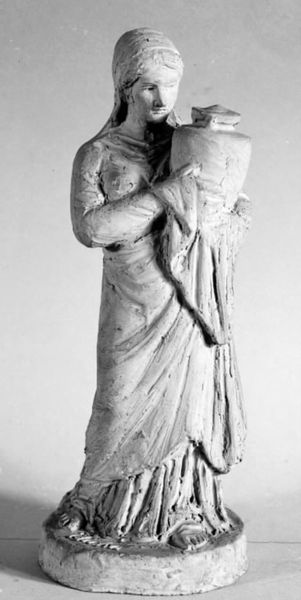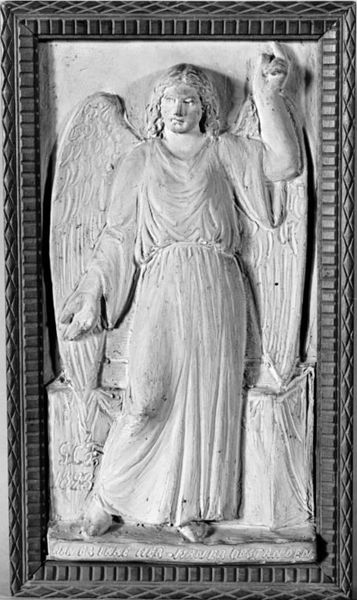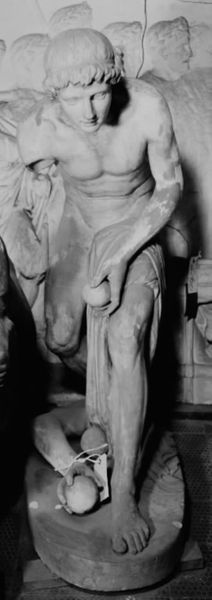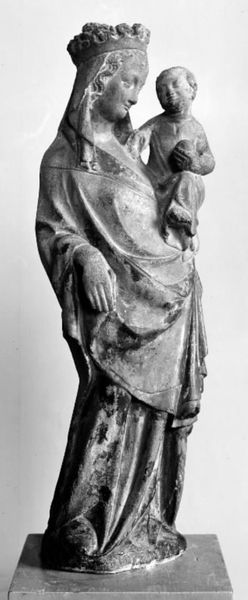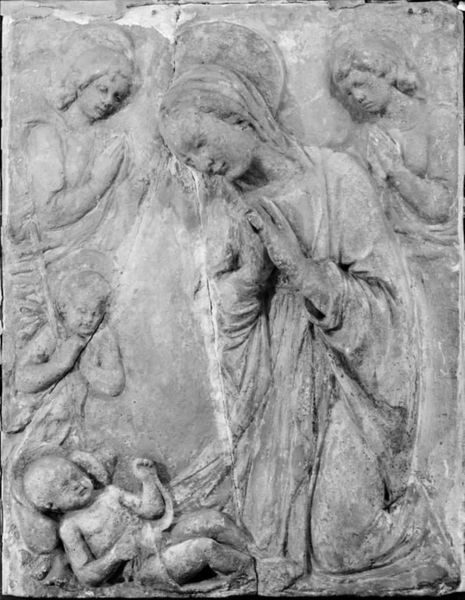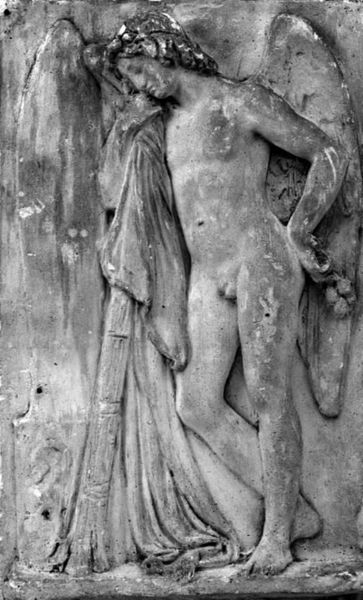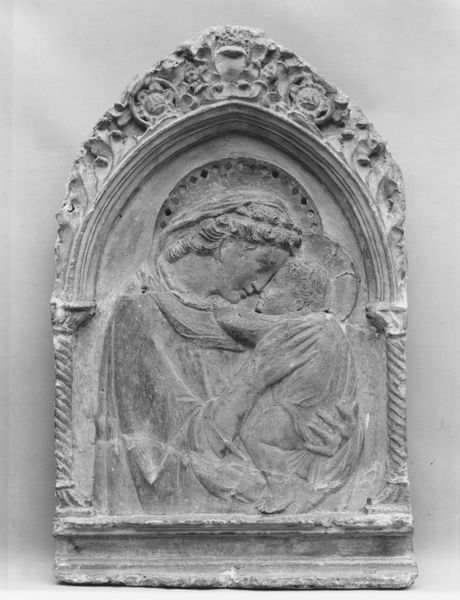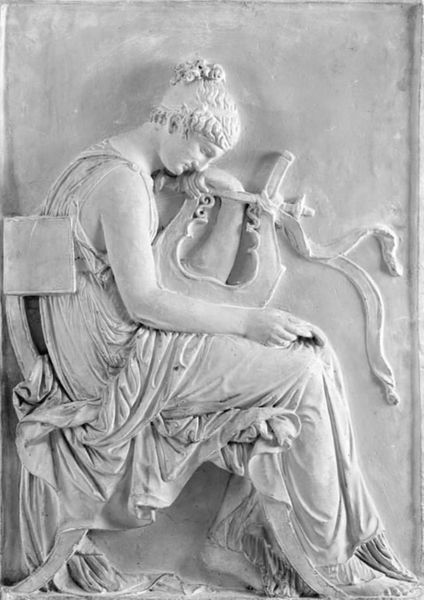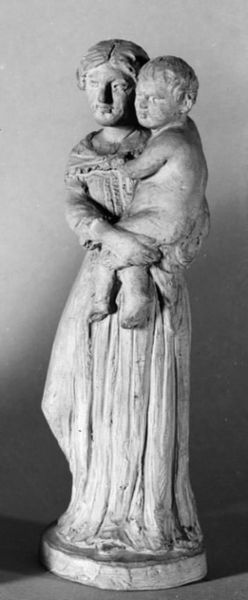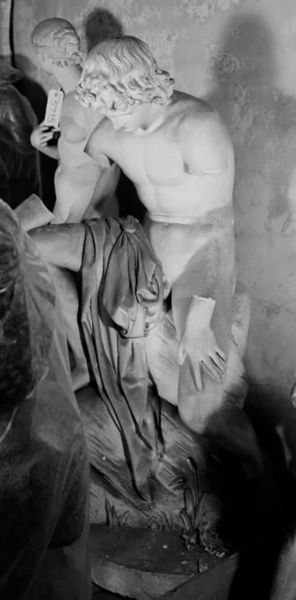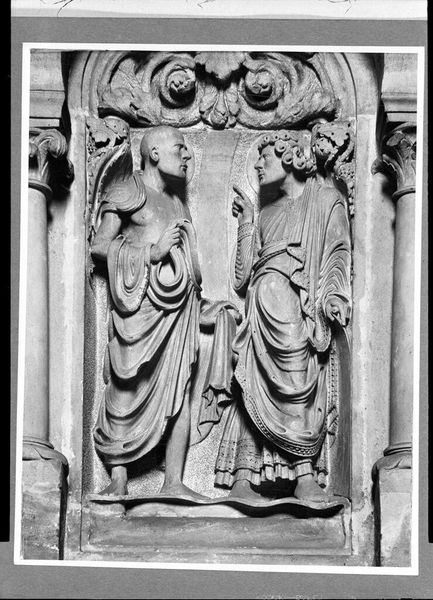
Pomona, havedyrkningens og frugthøstens gudinde vander en vinstok 1833
0:00
0:00
drawing, relief, marble
#
portrait
#
drawing
#
neoclacissism
#
allegory
#
sculpture
#
relief
#
landscape
#
classical-realism
#
figuration
#
monochrome
#
marble
Dimensions: 60.5 cm (height) x 30.5 cm (width) x 7.4 cm (depth) (Netto)
Hermann Ernst Freund made this plaster relief, "Pomona," in the early nineteenth century. Plaster is a humble material, of course, but it has a long and important history in sculpture. It allowed artists to translate their designs from clay models into durable forms, ready for transfer to more prestigious media like marble or bronze. Here, we see the goddess Pomona rendered in this unassuming material. Look closely at the flat, matte surface, which absorbs light and gives the figure a soft, ethereal quality. Note also how the plaster captures the intricate details of the drapery, the grapes, and the vine itself. Think about the labor involved in producing this relief. Freund would have first sculpted the design in clay, then created a plaster mold. Finally, he would have cast the relief, refining the surface with chisels and rasps. This step-by-step process democratized sculpture to some extent, making it more accessible than carving stone or casting bronze. Though the result is more than just a placeholder, this Pomona reminds us of the means of production that underly all artistic creation.
Comments
No comments
Be the first to comment and join the conversation on the ultimate creative platform.


